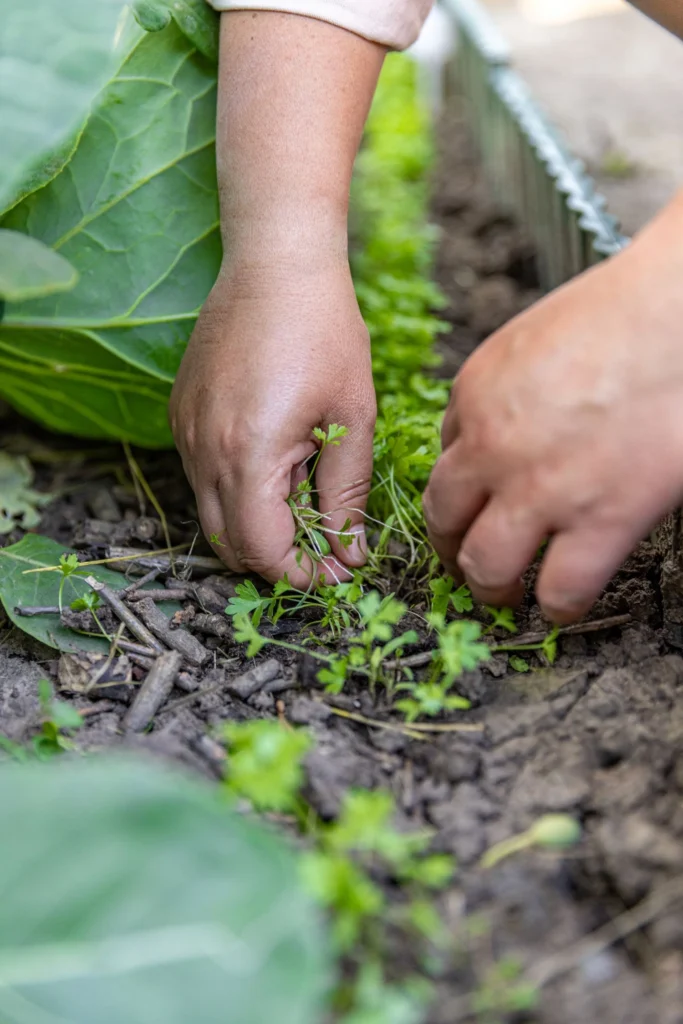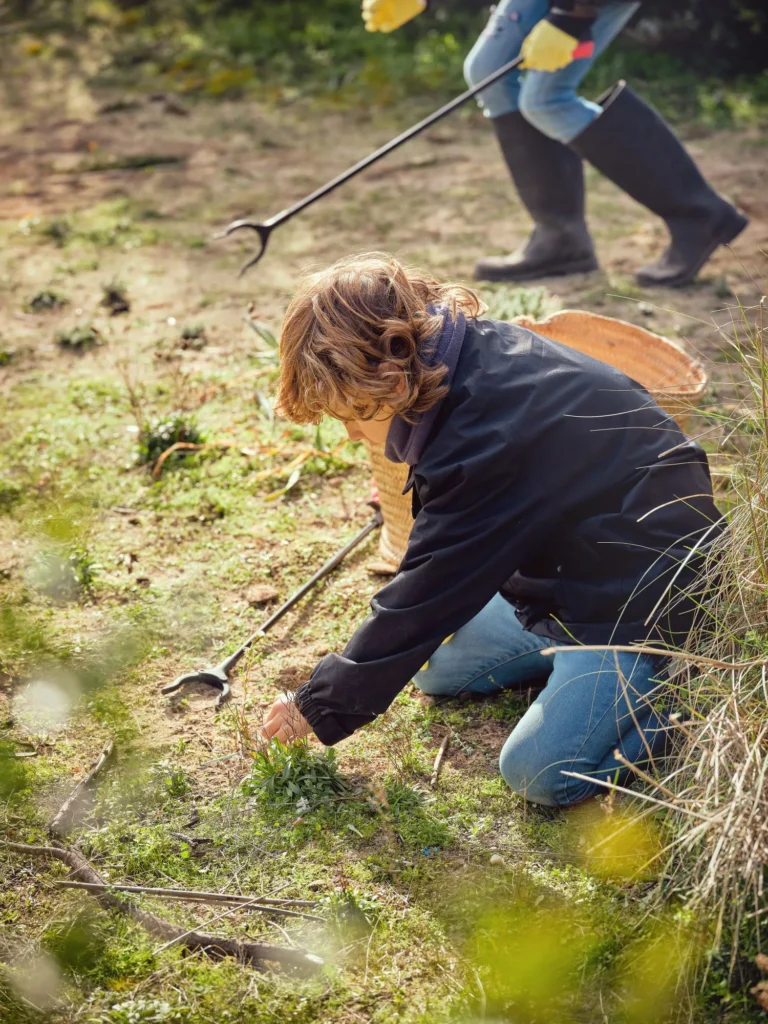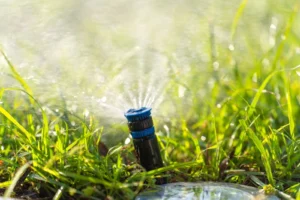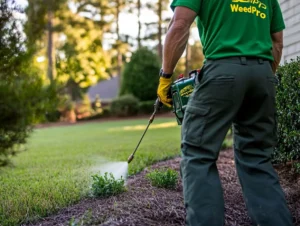Key Takeaways
- Healthy flower beds rely on strong weed prevention, not just removal. Mulch, pre-emergents, and dense plantings all play crucial roles in Georgia landscapes.
- Organic weed control can work, but it requires realistic expectations, repeat treatments, and careful protection of ornamentals.
- Selective herbicides and precise application are essential for targeting weeds without damaging flowers.
- Seasonal planning, spring prep, summer monitoring, and fall cleanup keep beds vibrant and reduce future weed pressure.
Georgia Flower Beds: Why Weed Control Matters More Than You Think
In Georgia’s warm climate, weeds aren’t just an eyesore; they compete aggressively with your ornamentals for water, nutrients, and sunlight. Left unmanaged, they spread fast, outgrow delicate flowers, and quickly take over even well-kept beds. The good news? With the right prevention-first approach, you can significantly reduce weed pressure and keep your beds lush and intentional year-round.
This guide breaks down the best strategies for weed control, safe methods for removing them, and how to choose chemical, organic, and mechanical options wisely. You’ll also learn the telltale signs of Georgia’s most common bed weeds and how to treat them without harming your favorite blooms.
Let’s start with the foundation of weed control: prevention.
Top Flower Bed Weed Prevention Techniques
Weed prevention is the easiest, most effective way to protect your flower beds. Instead of fighting mature weeds, you stop them before they ever emerge, saving time, reducing stress on ornamentals, and keeping your beds cleaner overall.
The Core Prevention Strategies
Strong weed prevention uses a mix of cultural, physical, and chemical practices:
- Mulching to block sunlight and stabilize soil moisture
- Pre-emergent herbicides to stop seeds from sprouting
- Dense planting to shade out open soil
- Weed barrier fabric in select (not all) areas
- Consistent irrigation habits that favor flowers, not opportunistic weeds
When these tactics work together, they dramatically reduce the soil seedbank and minimize the need for repeat treatments.
Prevention Method Comparison
| Prevention Method | Effect on Weeds | Best Use-Case |
| Mulch (wood chips, bark) | Blocks sunlight and reduces seed germination | Established beds around perennials/shrubs |
| Pre-emergent herbicide | Stops weed seeds from sprouting | Late winter/early spring before germination |
| Dense planting/groundcover | Shades soil, outcompetes weed seedlings | New beds or perennial borders |
| Weed barrier fabric | Creates a physical block underneath mulch | Paths or areas where roots won’t be disturbed |
How Mulching Protects Flower Beds from Weeds
Mulch is one of the simplest, safest, and most effective weed prevention tools for Georgia gardeners.
Why Mulch Works
- Blocks the sunlight weed seeds need to germinate
- Creates a physical barrier between soil and airborne seeds
- Stabilizes soil temperature during Georgia heat
- Helps retain moisture for ornamentals
Best Mulching Practices
- Apply 2–3 inches of mulch around plants
- Keep mulch slightly away from stems to prevent rot
- Refresh the layer annually
- Avoid overly compacted mulch, rake lightly to keep it breathable
Good mulching sets your flower beds up for success and makes pre-emergent herbicides even more effective.
Pre-Emergent Herbicides: Your Early-Season Defense Layer
Pre-emergent herbicides create a protective barrier in the soil that prevents weed seeds from germinating. They do not kill existing weeds, but they are excellent for stopping new ones from forming.
Timing Is Everything in Georgia
- Late winter through very early spring for warm-season weed prevention
- Early fall application for winter annual weeds (where needed)
Use Pre-Emergents Safely Around Ornamentals
- Choose products labeled safe for flower beds
- Avoid use before planting annuals or reseeding
- Follow instructions for watering-in requirements and compatibility with mulch
Correct timing and application are the difference between a weed-filled season and a clean flower bed.
Natural and Organic Weed Control Options
Organic methods can be effective, especially when paired with regular hand weeding and mulching, but it’s essential to know their limitations.
Common Organic Options
- Horticultural vinegar (20% acetic acid) for young weeds
- Corn gluten meal as a mild pre-emergent
- Boiling water or steam for cracks, borders, and hardscapes
- Flame weeding (not recommended near mulch or dry beds)
Organic Method Comparison
| Organic Method | Selectivity & Risks | Best Use |
| Horticultural vinegar | Non-selective; burns any foliage it touches | Hardscape cracks, select perimeter weeds |
| Corn gluten meal | Mild, inconsistent pre-emergent effect | Low-seedbank beds before planting |
| Boiling water/steam | Non-selective; instant tissue destruction | Paths, edges, or containers away from ornamentals |
Organic Weed Killers That Are Safe for Flower Beds
When using organic sprays, precision matters more than the ingredient list.
Safe Application Tips
- Apply only on calm, dry days
- Protect nearby flowers with cardboard shields
- Expect multiple treatments for persistent weeds
- Avoid contact with stems, buds, or leaf margins
Hand Weeding & Mechanical Weed Removal
Hand weeding remains one of the safest, most selective ways to remove weeds from beds filled with ornamentals.
When Hand Weeding Is Most Effective
- Young weeds or seedlings
- Taprooted weeds like dandelion
- Beds with sensitive, valuable flowers
- Areas where herbicides pose drift risks
Mechanical Tools That Help
- Dandelion diggers
- Narrow trowels
- Stirrup hoes (for seedling flushes)
Weeding after rainfall or irrigation loosens the soil, making removal easier with less root breakage.
Regular manual care prevents weed flushes from turning into full invasions.
Post-Emergent Herbicides for Flower Beds
Post-emergents target existing weeds but using them safely in flower beds requires careful product selection.
Types of Post-Emergent Herbicides
| Herbicide Type | Targets | Flower-Safe Notes |
| Selective broadleaf | Dandelion, chickweed, clover | Often safe when labeled for ornamentals |
| Selective grass killer | Crabgrass, foxtail | Avoid grassy groundcovers unless labeled safe |
| Non-selective contact | All green tissue | Keep away from ornamentals; use only in paths & hardscapes |
Guidelines for Safe Use
- Apply during active weed growth
- Avoid windy days to minimize drift
- Read all label restrictions carefully (especially around pollinators)
When in doubt, let a professional identify the weeds and handle selective product application.
How to Choose Herbicides That Protect Your Flowers
Choosing herbicides for flower beds requires extra precision.
What to Look For
- Labels specifically stating “safe for use in ornamental beds”
- Active ingredients that match your target weed type
- Directions for watering, mulching, and re-entry intervals
- PPE requirements and environmental precautions
If you’re managing a bed full of sensitive species or expensive plantings, professional guidance is always recommended.
Why Professional Flower Bed Weeding Services Make a Difference
Professionals bring expertise that saves time, reduces risk, and improves long-term results.
What You Gain with Professional Support
- Correct weed identification
- Selective product choice that protects ornamentals
- Efficient treatment schedules
- Mulch management and bed health assessments
- Seasonal planning based on weed biology
Make Weed-Free Flower Beds a Reality, Partner with Weed Pro

Flower beds are an investment, and keeping them weed-free requires the right balance of prevention, treatment, and seasonal care. With Georgia’s long growing season and aggressive weed varieties, having a professional strategy makes all the difference.
Weed Pro offers tailored flower bed weed control plans built around plant safety, precise product selection, and proactive seasonal management. Whether you want organic solutions, selective herbicide applications, or long-term maintenance, we’re here to protect your blooms.
Contact us today and let Weed Pro help you create vibrant, clean, and healthy flower beds you’ll love all year long.
Frequently Asked Questions
How often should flower beds be mulched?
Most beds benefit from a fresh 2–3 inch mulch layer once per year. Refreshing mulch helps block new weed seeds, regulate soil temperature, and keep moisture levels stable for your flowers.
What weeds are most common in Georgia flower beds?
Weeds like crabgrass, spurge, doveweed, oxalis, and chickweed often appear in Georgia landscapes. Identifying weeds early helps determine whether hand pulling, spot treatment, or pre-emergent application is the best solution.







